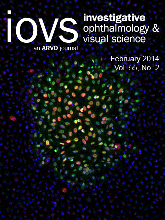Lens power in a population-based cross-sectional sample of adults aged 40 to 64 years in the Shahroud Eye Study
Authors
Affiliations
Abstract
Purpose: To report on calculated lens power in adults in relation to other ocular components of refraction, analyzed in relation to secular change in height and education.
Methods: The first phase of the Shahroud Eye Cohort Study is a cross-sectional population-based study in Iranian subjects 40 to 64 years old. Data on cycloplegic spherical equivalent refraction and the ocular components of the right eyes were used for the calculation of crystalline lens power with Bennett’s formula. Interactions between sex and age as independent variables were analyzed by two-way analysis of variances.
Results: Cycloplegic refraction data and biometry were obtained from 4592 subjects, of whom 2666 (58%) were women. The mean lens power showed a biphasic trend. Up to the age of 50, younger subjects had lower lens power than older subjects, but after the age of 50, older subjects had lower lens power. A secular trend in height was found, with younger subjects significantly taller than older ones. Taller men or women had longer eyes, with flatter corneas and less powerful lenses, independent of refractive error. In multiple regression models, corneal power (P < 0.001), axial length (P < 0.001), and lens power (P < 0.001) were all associated with height, independent of age and sex.
Conclusions: There was an unexpected biphasic pattern of the distribution of lens power with age in this cross-sectional study. Younger subjects were taller, and despite having longer axial lengths, their bigger eyes were still predominantly emmetropic. The greater axial lengths were counterbalanced by both lower corneal and lower lens powers.
Keywords: adult; lens power; population based study.

